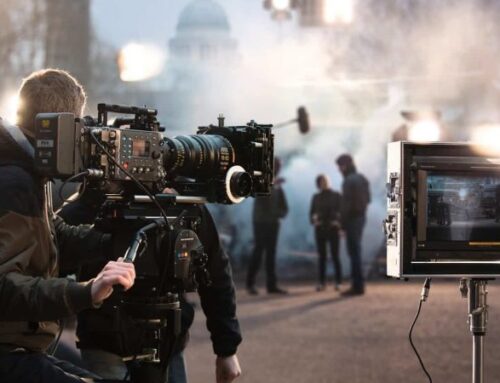The trial in Capital v. Thomas was one of the first stories I began tracking over a year ago. See Jury Awards RIAA $222,000 against Thomas: My Thoughts on the Verdict and Jammie Thomas to appeal verdict in RIAA Litigation.
Now, in a decision issued on September 24, 2008 – only eight days shy of the one-year anniversary of the verdict – Judge Michael J. Davis of the United States District Court in Minnesota, who heard the case originally, vacated the $222,000 verdict against Jamie Thomas in Capital v. Thomas and ordered a new trial. Read the 44-page verdict.
Judge Davis found that he provided the jury with an erroneous instruction, Jury Instruction No. 15, which read:
The act of making copyrighted sound recordings available for electronic distribution on a peer-to-peer network, without license from the copyright owners, violates the copyright owners’ exclusive right of distribution, regardless of whether actual distribution has been shown.
A fter reviewing case law in other circuits, Judge Davis reached the opposite conclusion in this memorandum and order, i.e. that “Liability for violation of the exclusive distribution right found in § 106(3) requires actual dissemination” and, therefore, the contrary  assertion in the instruction substantially prejudiced the jury against Thomas.
assertion in the instruction substantially prejudiced the jury against Thomas.
In his opinion generally, the Judge Davis examined the reproduction right, the effect of MediaSentry’s involvement in the distribution, the plain meaning of the term “distribution,” whether the term “distribution” is synonymous with the term “publication” under the Copyright Act, and whether a plaintiff has the exclusive right to authorize a distribution.
The Judge refutes the RIAA’s theory that making a copyright available for distribution violates Section 106(3) of the Copyright Act, which gives the owner the exclusive right “to distribute copies or phonorecords of the copyrighted work to the public by sale or other transfer of ownership, or by rental, lease, or lending.” Judge Davis examines the dictionary definition of the term “distribute,” other sections of the Copyright Act, and provisions of the analogous Patent Act, to arrive at the conclusion that “the term ‘distribution’ does not including making available and, instead, requires actual dissemination.” The Court noted that if it had intended to include “making available” as one of the means of distributing a copyright, Congress would have specifically added the language as it had done in the Patent Act when Congress amended it to forbade “offers to sell.”
Judge Davis also refuted the Plaintiff’s argument that the definitions of “publication” and “distribution” under the Copyright Act are synonymous as incorrect. His conclusion regarding this issue is worth quoting in its entirety:
The Court concludes that simply because all distributions within the meaning of §106(3) are publications does not mean that all publications within the meaning of § 101 are distributions. The statutory definition of publication is broader than the term distribution as used in § 106(3). A publication can occur by means of the “distribution of copies or phonorecords of a work to the public by sale or other transfer of ownership, or by rental, lease or lending.” § 101. This portion of the definition of publication defines a distribution as set forth in § 106(3). However, a publication may also occur by “offering to distribute copies or phonorecords to a group of persons for purposes of further distribution, public performance, or public display.” § 101. While a publication effected by distributing copies or phonorecords of the work is a distribution, a publication effected by merely offering to distribute copies or phonorecords to the public is merely an offer of distribution, not an actual distribution.
Congress’s choice to use both terms within the Copyright Act demonstrates an intent that the terms have different meanings. “It is untenable that the definition of a different word in a different section of the statute was meant to expand the meaning of ‘distribution’ and liability under § 106(3) to include offers to distribute.” Atl. Recording Corp. v. Howell, 554 F. Supp. 2d 976,
985 (D. Ariz. 2008). The language of the Copyright Act definition of publication clearly includes distribution as part of its definition – so all distributions to the public are publications, but not all publications are distributions to the public.
Finally, in reaching its opinion that the jury verdict should be vacated because of the erroneous instruction, Judge Davis clearly states that it is not necessary to reach Thomas’ issue of whether the award was excessive (See page 40 of his opinion). Nonetheless, he did indicate his leanings on this issue in dicta as follows:
The Court would be remiss if it did not take this opportunity to implore Congress to amend the Copyright Act to address liability and damages in peer-to‐peer network cases such as the one currently before this Court. The Court
begins its analysis by recognizing the unique nature of this case. The defendant is an individual, a consumer. She is not a business. She sought no profit from her acts. The myriad of copyright cases cited by Plaintiffs and the Government, in which courts upheld large statutory damages awards far above the minimum, have limited relevance in this case. All of the cited cases involve corporate or business defendants and seek to deter future illegal commercial conduct. The parties point to no case in which large statutory damages were applied to a party who did not infringe in search of commercial gain.The statutory damages awarded against Thomas are not a deterrent against those who pirate music in order to profit. Thomas’s conduct was motivated by her desire to obtain the copyrighted music for her own use. The Court does not condone Thomas’s actions, but it would be a farce to say that a single mother’s acts of using Kazaa are the equivalent, for example, to the acts of global financial firms illegally infringing on copyrights in order to profit in the securities market. Cf. Lowry’s Reports, Inc. v. Legg Mason, Inc., 271 F. Supp. 2d 42 737, 741‐42 (D. Md. 2003) (describing defendants as a “global financial‐services firm” and a corporation that brokers securities). While the Court does not discount Plaintiffs’ claim that, cumulatively, illegal downloading has far‐reaching effects on their businesses, the damages awarded in this case are wholly disproportionate to the damages suffered by Plaintiffs. Thomas allegedly infringed on the copyrights of 24 songs ‐ the equivalent of approximately three CDs, costing less than $54, and yet the total damages awarded is $222,000 – more than five hundred times the cost of buying 24 separate CDs and more than four thousand times the cost of three CDs. While the Copyright Act was intended to permit statutory damages that are larger than the simple cost of the infringed works in order to make infringing a far less attractive alternative than legitimately purchasing the songs, surely damages that are more than one hundred times the cost of the works would serve as a suffic
ient deterrent.Thomas not only gained no profits from her alleged illegal activities, she sought no profits. Part of the justification for large statutory damages awards in copyright cases is to deter actors by ensuring that the possible penalty for infringing substantially outweighs the potential gain from infringing. In the case of commercial actors, the potential gain in revenues is enormous and enticing to potential infringers. In the case of individuals who infringe by using peer‐to‐peer networks, the potential gain from infringement is access to free music, not the possibility of hundreds of thousands – or even millions – of dollars in profits. This fact means that statutory damages awards of hundreds of thousands of dollars is certainly far greater than necessary to accomplish Congress’s goal of deterrence.
Unfortunately, by using Kazaa, Thomas acted like countless other Internet users. Her alleged acts were illegal, but common. Her status as a consumer who was not seeking to harm her competitors or make a profit does not excuse her behavior. But it does make the award of hundreds of thousands of dollars in damages unprecedented and oppressive.
One issue I note in this dicta by Judge Davis is that statutory damages, as provided in the Copyright Act, were not necessarily intended only as a deterrent, but also were established because it is sometimes difficult to determine the value of an intellectual property. This does not, however, negate his primary point that a factor of 100x the actual damages might have been a more reasonable award than 500x the actual damages.
Expect to hear more about this case as the new trial unfolds.





